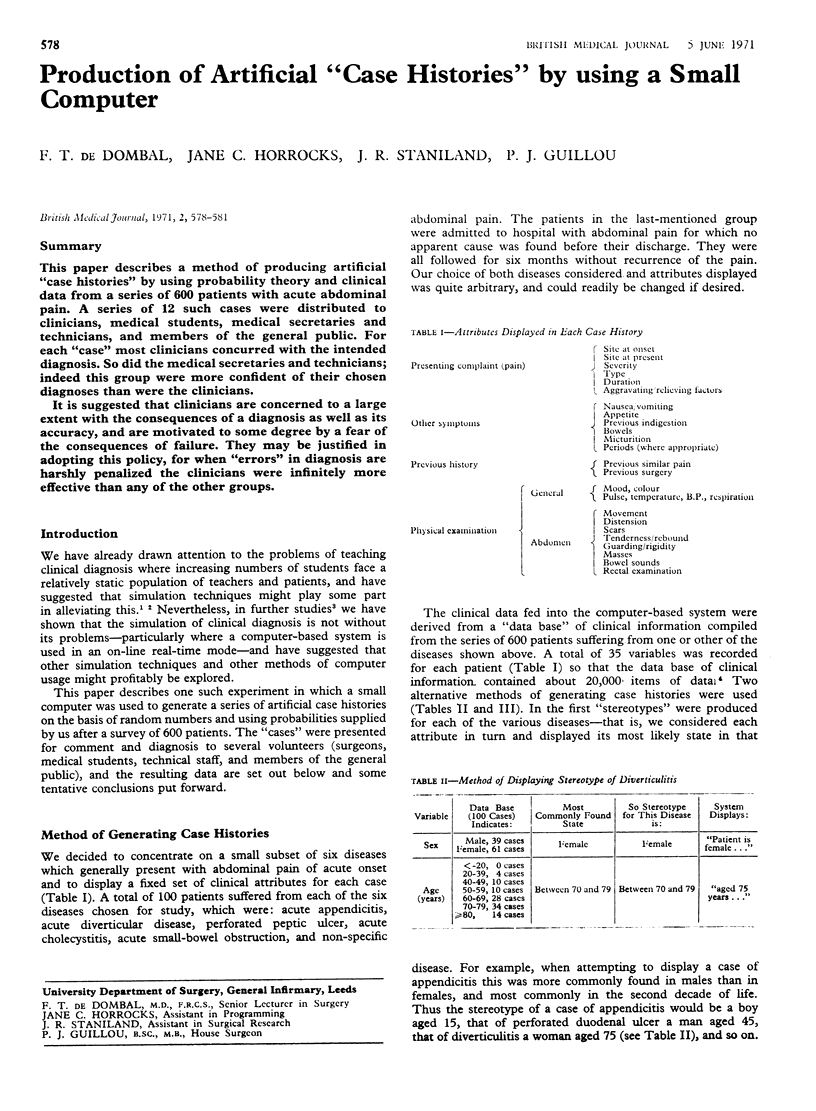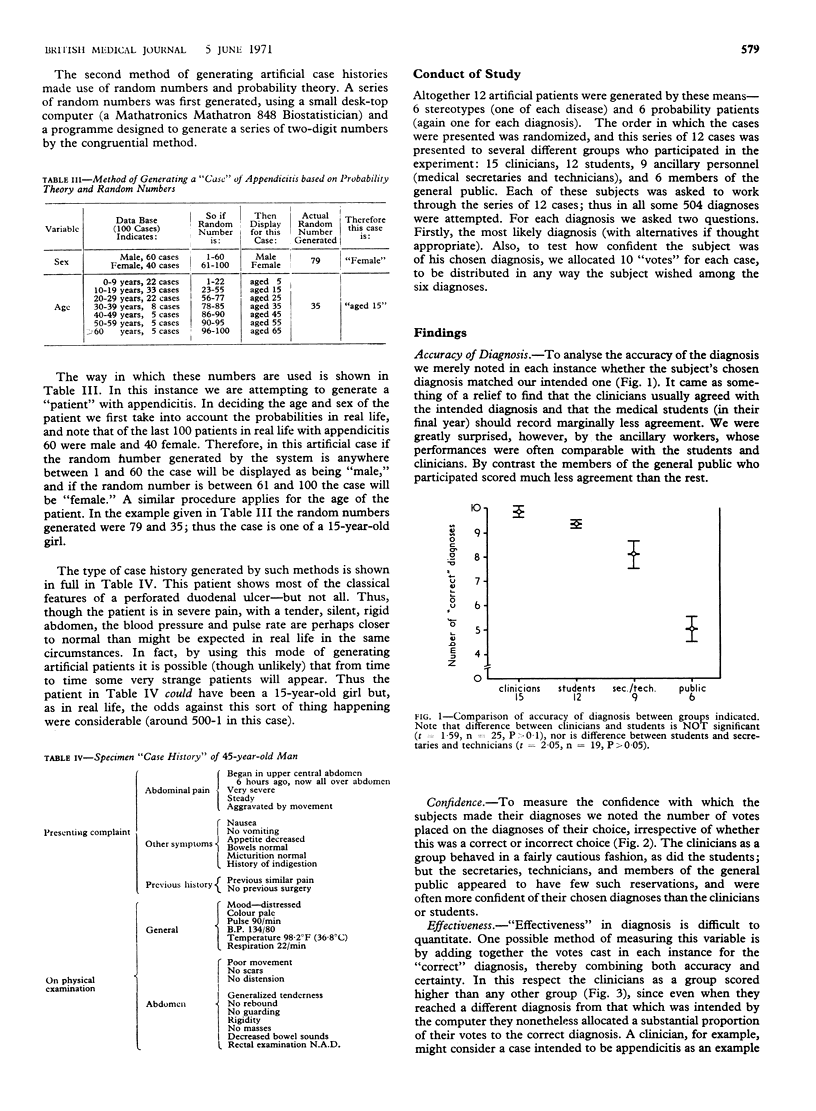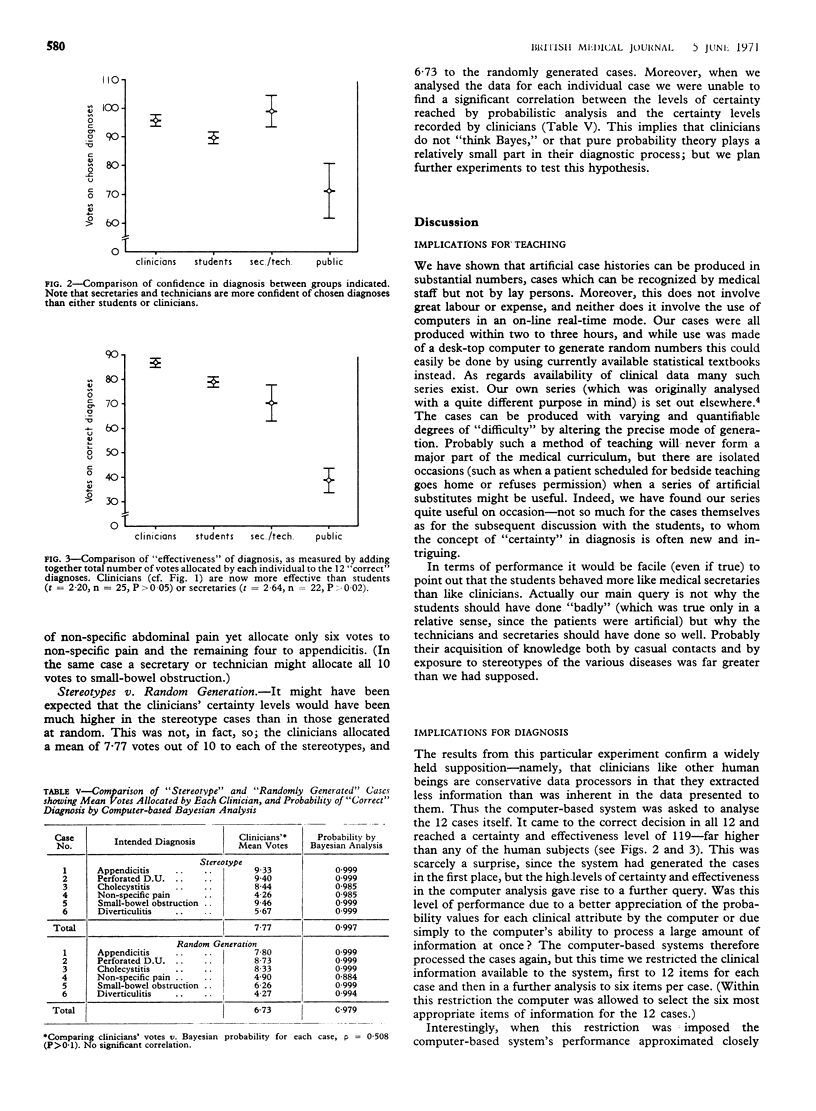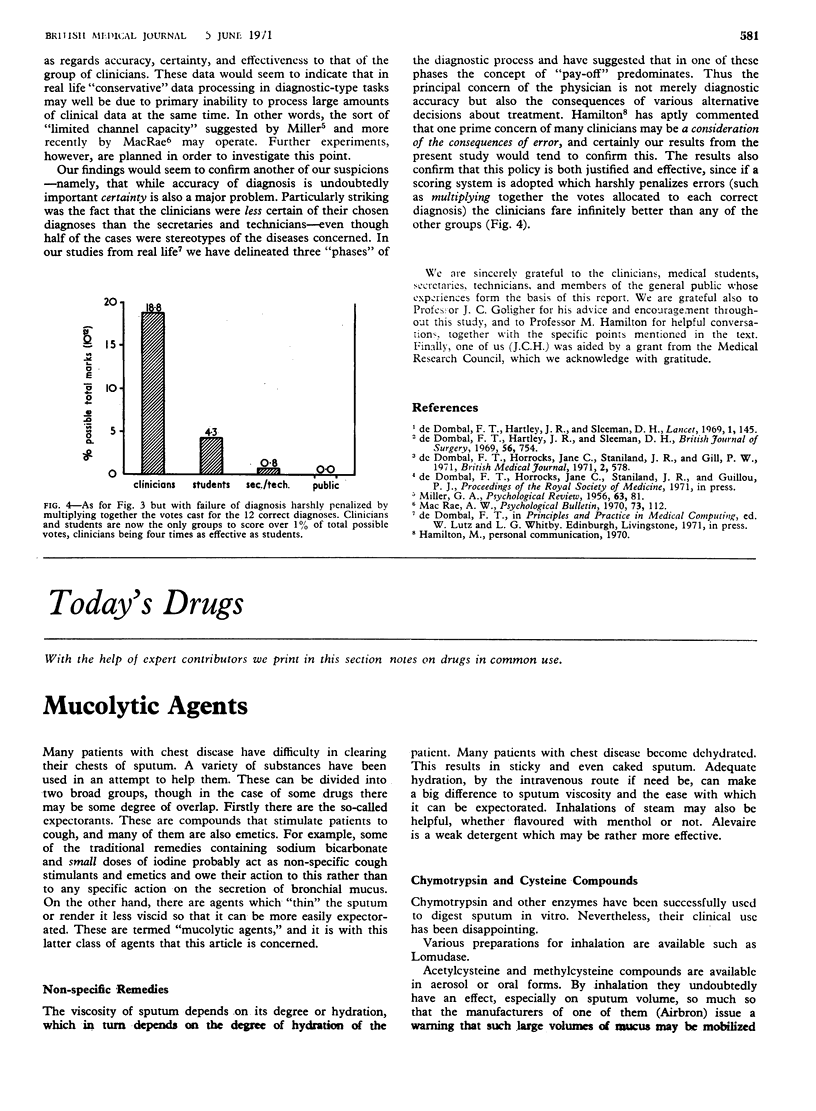Abstract
This paper describes a method of producing artificial “case histories” by using probability theory and clinical data from a series of 600 patients with acute abdominal pain. A series of 12 such cases were distributed to clinicians, medical students, medical secretaries and technicians, and members of the general public. For each “case” most clinicians concurred with the intended diagnosis. So did the medical secretaries and technicians; indeed this group were more confident of their chosen diagnoses than were the clinicians.
It is suggested that clinicians are concerned to a large extent with the consequences of a diagnosis as well as its accuracy, and are motivated to some degree by a fear of the consequences of failure. They may be justified in adopting this policy, for when “errors” in diagnosis are harshly penalized the clinicians were infinitely more effective than any of the other groups.
Full text
PDF



Selected References
These references are in PubMed. This may not be the complete list of references from this article.
- MILLER G. A. The magical number seven plus or minus two: some limits on our capacity for processing information. Psychol Rev. 1956 Mar;63(2):81–97. [PubMed] [Google Scholar]
- de Dombal F. T., Hartley J. R., Sleeman D. H. A computer-assisted system for learning clinical diagnosis. Lancet. 1969 Jan 18;1(7586):145–148. doi: 10.1016/s0140-6736(69)91149-0. [DOI] [PubMed] [Google Scholar]
- de Dombal F. T., Hartley J. R., Sleeman D. H. Teaching surgical diagnosis with the aid of a computer. Br J Surg. 1969 Oct;56(10):754–757. doi: 10.1002/bjs.1800561016. [DOI] [PubMed] [Google Scholar]


